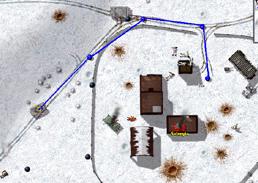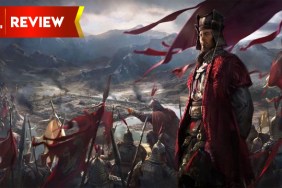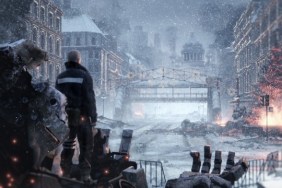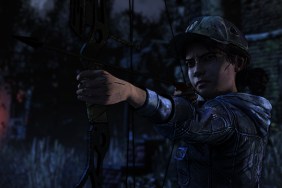“Did You See The Frightened Ones? Did You See The Falling Bombs?”
1998 and 1999 are shaping up to be years of many high pitched squeals, tales
of sound and fury, all signifying a renewed interest in World War 2. WW2 has
always been something of a national obsession. It was one of the few times in
world history where genuine evil was clearly and blatantly committing its foul
deeds. It was also one of those times during which many will forget the occasional
moral lapse on the part of America, some of the hypocrisy that was offered bare
to the world. It was as close to Right vs Wrong as modern warfare will probably
ever see.
It was
also the largest battle ever fought. The images of huge, clashing armies of
soldiers, tanks, ships, and planes in combat over most of the globe are some
of the most epic scenes in all of history, challenged only by the Crusades.
Perhaps some of you critically huddled, semi-literate (just teasing, you are
reading this after all) masses out there have seen the incredible animation
scenes from Pink Floyd’s The Wall: Images of thousand-foot-tall flaming
demons morphing into metallic skeletal towers spreading their arms out to herald
in the thousands of fighters and bombers raining apocalypse down on London.
So it’s a bit of a pity when many of the World War 2 games out there fail to
have a similar effect on the gamer. Or, like Close Combat 3, they don’t
even really deal with one of the more tactically interesting scenarios from
the greatest and most dramatic conflict in history.
To drop from the emotion and hype, World War 2 is also one of the most interesting
conflicts in history from a military standpoint. This makes it great food for
gaming. Most of these titles, like SSI’s Steel Panthers, or almost any
pick of the TalonSoft games, are extremely complex turn based board games inspired
by classics like Axis & Allies that deal with large battles in a purely
strategic, somewhat sterile way. Back in late 1996, Atomic games created Close
Combat. Published by Microsoft, Close Combat merged deep strategy
war-gaming with real-time strategy. Close Combat, which dealt with D-Day,
and Close Combat 2: A Bridge To Far, which dealt with Operation Market
Garden (possibly the most interesting battle in all of World War 2), were both
excellent and revolutionary games.
So now, for Close Combat 3, Atomic turned away from the American and
British conflicts and instead chose the entire Russian Front. It’s a sad mistake.
The basic idea of Close Combat, is that you control several teams of
ground soldiers and tanks in real time over a small battlefield, one roughly
the size of 4 hexes in a TalonSoft game. In these battles you command these
troops, who have emotional states that play heavily on what they will actually
do, which may at times differ from your orders. You must use your forces to
destroy your enemy and capture all of the ‘victory location’ on the map. Though
a simple premise, the precise nature of the ground warfare simulation makes
this a complicated and involved task that will daunt anyone who lacks an innate
gift for strategy.
The problem that arises when you apply this formula to the Russian front scenario
is that Close Combat is not designed to handle such large scale conflicts.
Like the name suggests, the Close Combat series was designed to simulate
tightly focused, tactically intriguing small situations like combat in a small
town or the taking of a bridge.
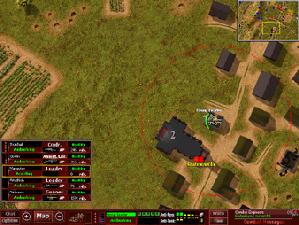 So, in
So, in
simulating the Russian Front, Close Combat must still focus on small
skirmishes, not large battles. This gives the player next to no sense of the
large battle taking place. In addition, the campaigns are just a bunch of strung
together missions with little context.
As far as the actual gameplay goes, Close Combat 3: The Russian Front
retains the same basic quality gameplay of its predecessor, but in order to
do that in the confines of the gaming system, makes some terrible lapses in
realism.
In the actual Russian front, the Germans lost about 3 million troops, and
the Russians lost about 43 million [Figures are from the Close Combat 3
Manual]. That’s roughly a 14 to 1 kill ratio. But in the game, the numbers of
Russian and German troops in any one mission are nearly identical. Also, the
power and precision of the two sides is very similar. In actuality, the Russians
were essentially a bunch of poorly trained bumbling fools with bad equipment
who only won because they had a population that could support an army 20 times
larger than that of the Germans.
Also, many of the missions are poorly designed, with the sides being woefully
mismatched. Like a real war, there are plenty of unwinable situations in CC3.
However, that makes the game a bad choice for those for whom strategy gaming
is less than an obsession.
Although graphics are not usually a prime concern in slower, more onerous
strategy games like CC3, the visuals are competent enough. The terrain
and the troops are well detailed and easy to make out. Although the engine does
not seem to have been changed from CC2, it still works well.
The sound is also adequate, although the aesthetics of CC3 (or any
tactical war sim) are not a huge factor in the game.
For those who have played the first two Close Combat games CC3
is essentially a mission pack dealing with a new, less interesting scenario.
It does add many new troop varieties due to there being a new Russian army to
play with, and a much appreciated waypoint feature.
For everyone else, Close Combat 3 is a difficult, onerous, almost unapproachable
game that fails to capture the drama of its subject matter or to take advantage
of the intriguing elements of the Eastern battlefields. Besides, who would want
to play as an idiotic, Stalinist Russian or a spiteful, goose-stepping German
anyway? Give me some good old American elbow grease any day, god darn it!
